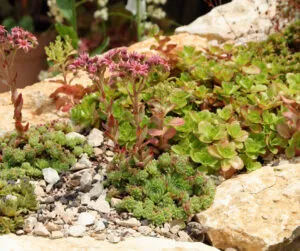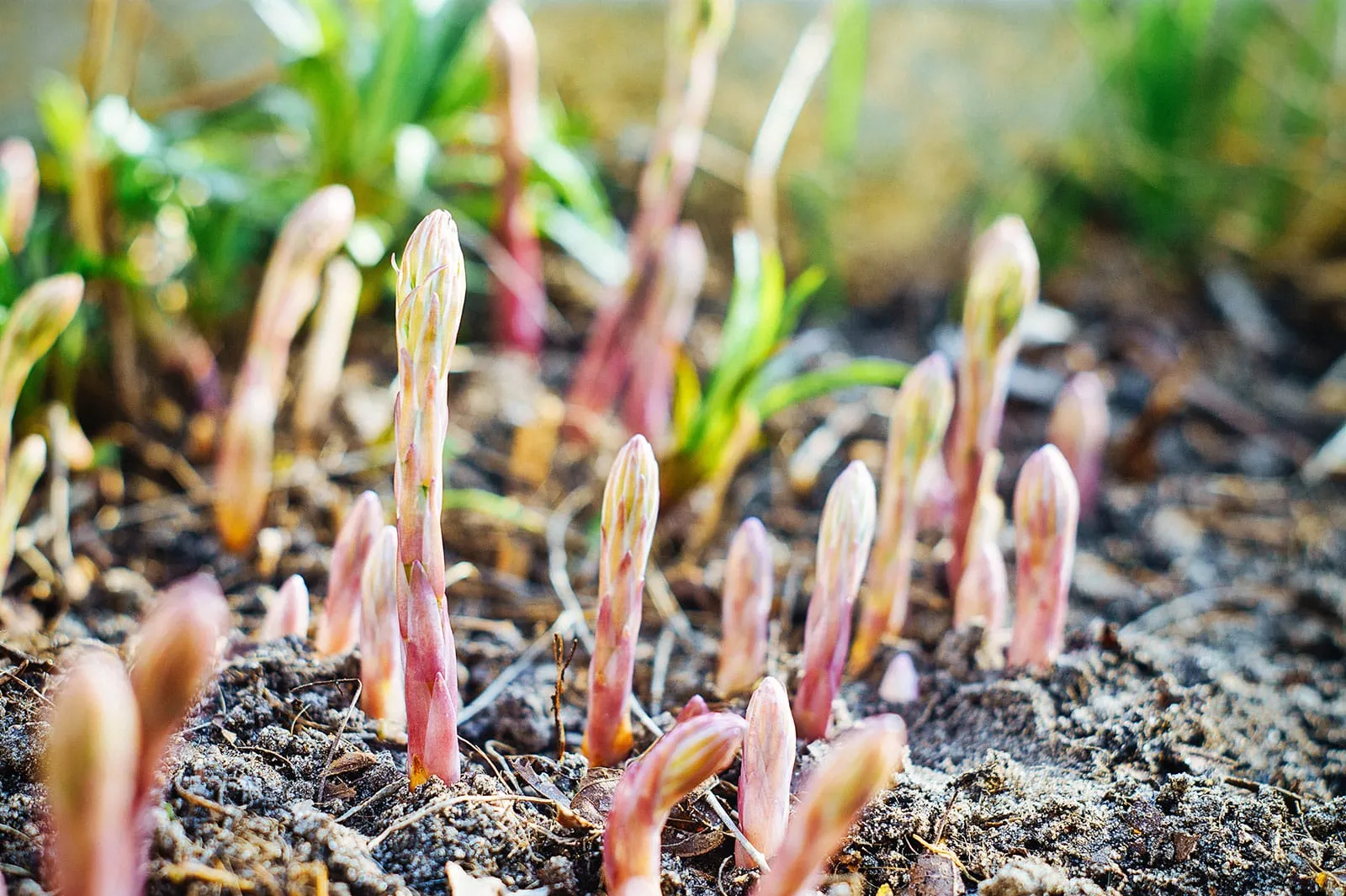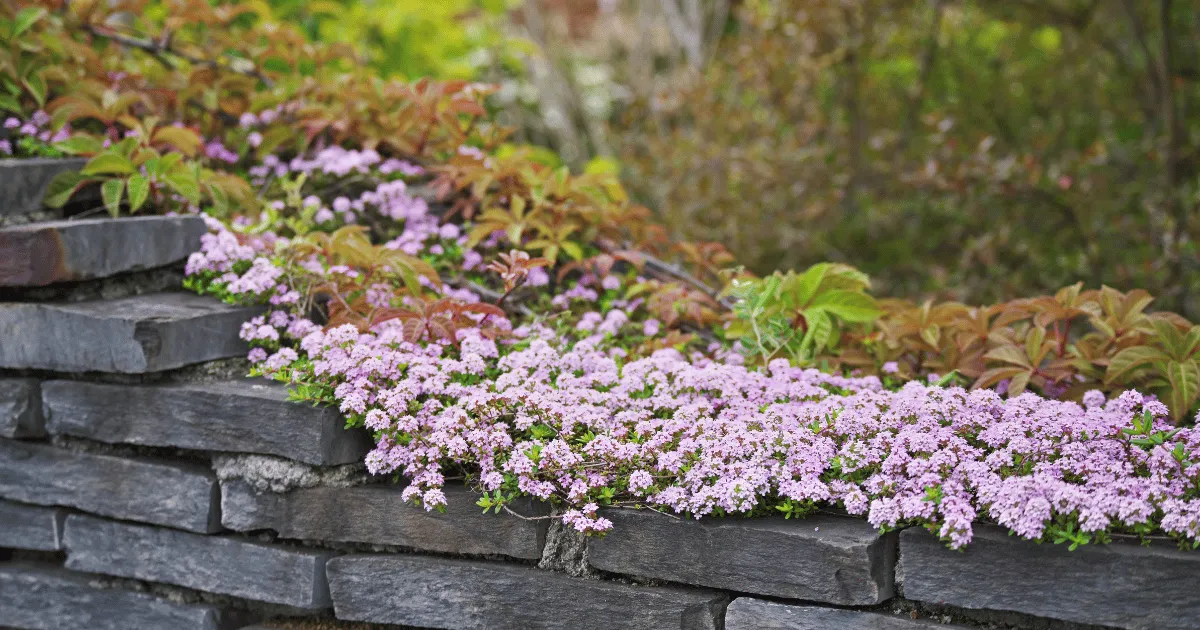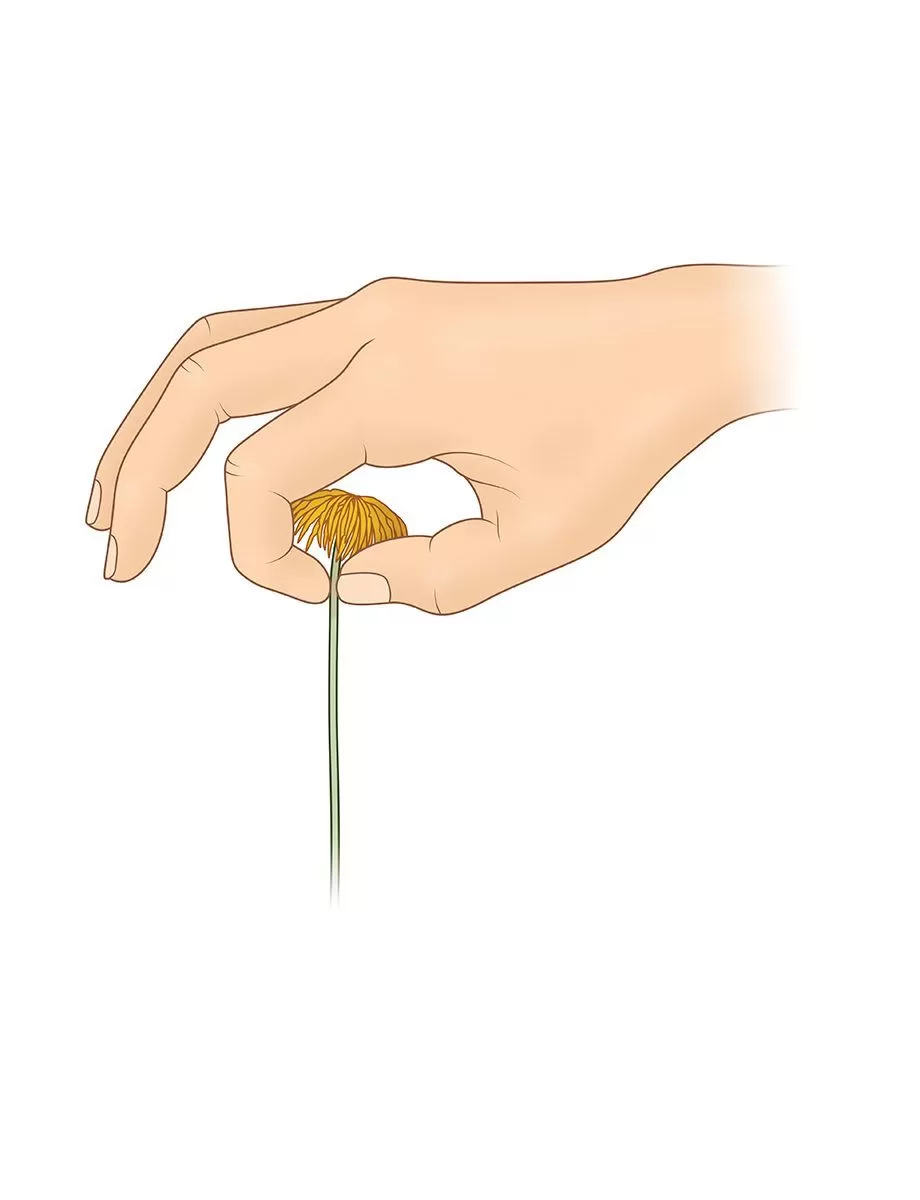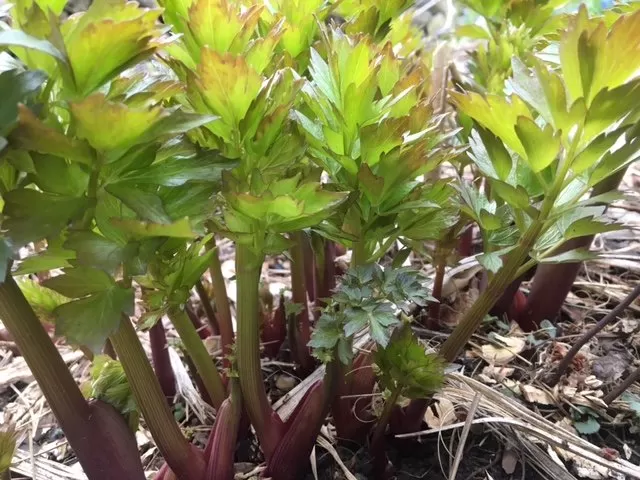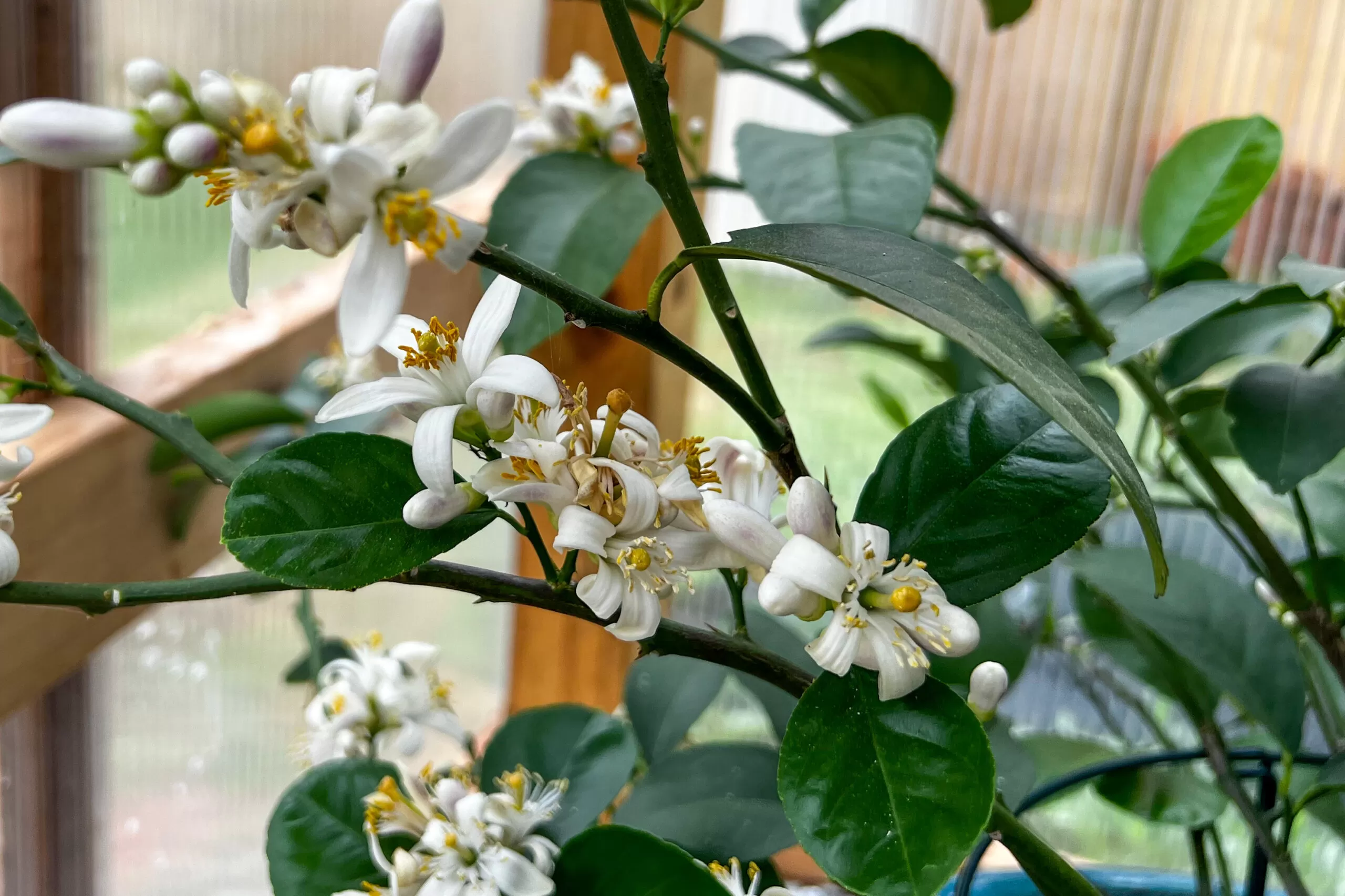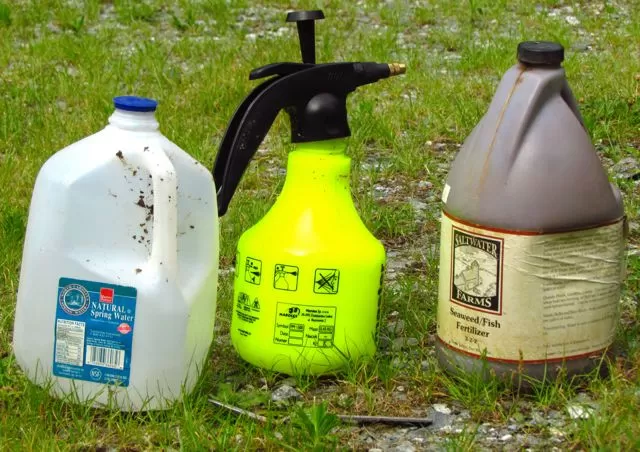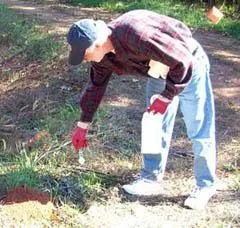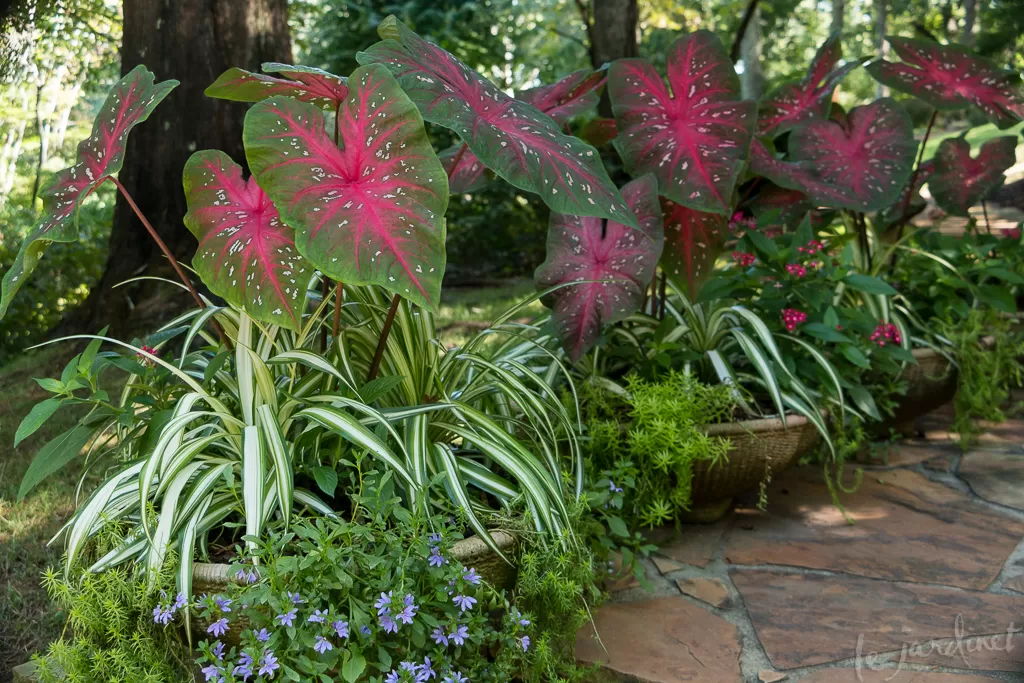- Unlock the secret to a beautiful, resilient garden with Sedum & Yarrow blends.
- Discover why these tough perennials thrive even in challenging conditions like poor soil and drought.
- Learn how their complementary forms, textures, and bloom times create stunning visual interest from summer through fall.
- Attract essential pollinators like bees and butterflies with these vibrant bloomers.
- Gain confidence with simple care tips for cultivating this winning plant combination.
Every gardener faces challenges, whether it’s battling persistent weeds, unpredictable weather, or surprisingly disruptive garden inhabitants – yes, even ants! I remember a few summers back, my beloved phlox was mysteriously declining, stem by stem. A little detective work revealed it was the extensive tunneling of busy ant colonies under the flagstone path adjacent to the garden bed. Rather than resorting to harsh chemicals, I decided to work with nature and seek out plants tough enough to tolerate disturbed soil and thrive despite the ant activity. That led me to discover the incredible resilience of both Yarrow and Sedum. It quickly became clear that sedum & yarrow blends weren’t just survivors in tough spots; they are truly stars of the low-maintenance, high-impact garden.
Contents
- Why Sedum & Yarrow? The Perfect Garden Partnership
- Getting to Know Yarrow (Achillea spp.)
- Cultivating Yarrow
- Caring for Yarrow
- Yarrow Varieties to Consider
- Pests and Diseases
- Managing Yarrow’s Wanderlust
- Introducing Sedum (Now Hylotelephium spp.)
- Why Sedum is a Great Companion
- Popular Sedum Varieties for Blending
- Creating Stunning Sedum & Yarrow Blends
- Companion Plants Beyond Sedum & Yarrow
- Conclusion
Why Sedum & Yarrow? The Perfect Garden Partnership
The magic of combining Sedum and Yarrow lies in their shared appreciation for lean conditions and full sun, coupled with their distinct visual appeal. While many perennials demand rich soil and consistent moisture, Yarrow and Sedum are content in average to poor soil with excellent drainage. This makes them ideal for hot, dry locations where other plants might struggle.
My personal experience battling the ant-induced sandy soil along the path highlighted this. Where more delicate plants withered, Yarrow seemed to revel in the sharp drainage, and Sedum groundcovers held their own. This resilience is a huge advantage for gardeners seeking beautiful results without constant fuss. Beyond their shared toughness, their different growth habits and bloom structures create a dynamic display: Yarrow offers airy, fern-like foliage and flat, plate-like flower clusters primarily in summer, while upright Sedums feature fleshy, succulent leaves and domed flower heads that bud in summer, color up in late summer/early fall, and provide structure well into winter.
Getting to Know Yarrow (Achillea spp.)
Yarrow, scientifically known as Achillea, is a classic cottage garden favorite, known for its feathery foliage and abundant blooms. Its name is said to come from Achilles, the Greek hero, who reportedly used it to stop bleeding wounds – a testament to its historical use and enduring toughness.
- Scientific Name: Achillea spp. (Common Yarrow: Achillea millefolium)
- Common Name(s): Yarrow, Common Yarrow, Milfoil
- Zone: Depending on variety, typically USDA Zones 2-9
- Light: Full sun (essential for strong growth and flowering)
- Water: Drought-tolerant once established; prefers well-drained soil
- Soil: Average to poor soil, well-drained (rich soil can lead to flopping)
- Bloom Time: Mid-summer, often with a second flush in late summer/early fall after cutting back
- Height: Depending on variety, 12-29 inches (30-75 cm)
- Spread: Depending on variety, 14-29 inches (60-75 cm)
Cultivating Yarrow
Growing Yarrow successfully is quite straightforward, provided you give it the conditions it loves. Full sun is non-negotiable – too much shade leads to weak, leggy plants. Good drainage is also key; Yarrow hates wet feet, especially in winter.
You can start Yarrow from seed indoors about 6-8 weeks before the last frost, sowing seeds on the soil surface and gently pressing them in. Germination usually takes 2-3 weeks. Alternatively, buying small potted plants in spring is an easy way to get started. Plants grown from seed may bloom in their first year, but they typically take a full season to become truly established and put on their best show.
Amend heavy clay soil with organic matter and even some grit or fine pebbles to improve drainage before planting. Water newly planted Yarrow well until it settles in. Once established, its drought tolerance is remarkable, requiring supplemental watering only during extended dry spells. Unlike many flowering perennials, Yarrow does not need fertilizer. Too much richness in the soil can actually cause stems to become weak and floppy.
Caring for Yarrow
Yarrow can look a bit tired after its main bloom cycle in mid-summer. Giving the entire plant a hard cutback encourages fresh foliage growth and often prompts a second flush of flowers in late summer or early fall. While it might look bare for a couple of weeks, the recovery is swift and rewarding. To maintain vigor and control the spread of some varieties, divide Yarrow clumps every 3 to 5 years, ideally in early spring or fall.
Yarrow Varieties to Consider
While the straight species Achillea millefolium can be quite a vigorous spreader, many modern cultivars have been bred for improved traits, including stronger stems, larger flowers, and a more controlled, clump-forming habit. When selecting Yarrow for your garden, pay attention to its reported spreading tendency.
- Achillea ‘Moonshine’
- Characteristics: Pale yellow flowers, silvery-grey fern-like foliage. Clump-forming.
- Size: Height: 18-23 inches (45-60 cm), Spread: 12-23 inches (30-60 cm)
- Zone: 3-9
- Note: A classic, non-spreading cultivar.
 Achillea Moonshine yarrow with pale yellow flowers and silver-grey foliage
Achillea Moonshine yarrow with pale yellow flowers and silver-grey foliage
-
Achillea ‘Little Moonshine’
- Characteristics: Shorter version of ‘Moonshine’ with bright yellow flowers and silver-grey foliage. Clump-forming.
- Size: Height: 12-14 inches (30-35 cm), Spread: 14-16 inches (35-40 cm)
- Zone: 3-9
- Note: Great for smaller spaces or front of the border; non-spreading.
-
Achillea millefolium ‘Hoffnung’
- Characteristics: Yellow flowers that fade to cream, green fern-like foliage. Inclined to spread.
- Size: Height: 20-23 inches (50-60 cm), Spread: 18-23 inches (45-60 cm)
- Zone: 3-9
- Note: Site carefully if you prefer a more contained plant.
-
Achillea ‘Anthea’
- Characteristics: Yellow flowers tinged with peachy-orange, silver-grey foliage. Non-spreading habit.
- Size: Height: 12-18 inches (30-45 cm), Spread: 12-18 inches (30-45 cm)
- Zone: 2-9
- Note: A popular British hybrid known for being well-behaved.
 Achillea Anthea yarrow with peachy yellow flowers and silvery foliage
Achillea Anthea yarrow with peachy yellow flowers and silvery foliage
-
Achillea millefolium ‘Little Susie’
- Characteristics: Rose-pink flowers, green fern-like foliage. Inclined to spread.
- Size: Height: 12-18 inches (30-45 cm), Spread: 18-23 inches (45-60 cm)
- Zone: 2-9
- Note: Be prepared to manage its spread by removing excess rhizomes in spring.
-
Achillea millefolium ‘Saucy Seduction’
- Characteristics: Reddish-pink flowers, green fern-like foliage. Spreading habit.
- Size: Height: 20-25 inches (50-65 cm), Spread: 18-23 inches (45-60 cm)
- Zone: 4-9
- Note: Similar to ‘Little Susie’ in its spreading tendency.
-
Achillea millefolium ‘Strawberry Seduction’
- Characteristics: Orange-red flowers with a yellow center, green fern-like foliage. Less aggressive spread than the species.
- Size: Height: 18-20 inches (45-50 cm), Spread: 18-23 inches (45-60 cm)
- Zone: 4-9
- Note: A popular variety with vibrant colors and a somewhat tamer spread.
 Achillea Strawberry Seduction yarrow with orange-red flowers and yellow centers
Achillea Strawberry Seduction yarrow with orange-red flowers and yellow centers
-
Achillea millefolium ‘Colorado’
- Characteristics: Strain producing flowers in shades of red, pink, white, and peach. Inclined to spread.
- Size: Height: 18-20 inches (45-50 cm), Spread: 18-23 inches (45-60 cm)
- Zone: 4-9
- Note: Offers a mix of colors but requires siting consideration due to spread.
-
Achillea millefolium ‘Cerise Queen’
- Characteristics: Cherry-red flowers, green fern-like foliage. Inclined to spread.
- Size: Height: 18-29 inches (45-75 cm), Spread: 23-29 inches (60-75 cm)
- Zone: 2-9
- Note: Vigorous spreader, requiring regular curtailing of growth.
 Achillea Cerise Queen yarrow with bright cherry-red flowers
Achillea Cerise Queen yarrow with bright cherry-red flowers
Pests and Diseases
Yarrow is remarkably pest-resistant. Occasionally, aphids might appear, but a strong blast of water from the hose is usually enough to dislodge them. For persistent infestations, insecticidal soap can be used. Powdery mildew and rust can sometimes occur, especially in humid conditions or when air circulation is poor. Avoid overhead watering if possible and ensure plants aren.t too crowded to promote good airflow.
Managing Yarrow’s Wanderlust
As noted, Common Yarrow (Achillea millefolium) can be quite vigorous due to its spreading underground rhizomes, sometimes even popping up in lawns. Historically, this species was introduced from Europe and Asia and has naturalized widely. To keep enthusiastic spreaders in check, pull or dig out the wandering stems in spring when the soil is soft. Deadheading flowers before they set seed is also crucial, as Yarrow seeds remain viable for years and can contribute significantly to its spread. Opting for clump-forming cultivars is the easiest way to avoid this issue.
Introducing Sedum (Now Hylotelephium spp.)
While the original article focused heavily on Yarrow, Sedum (now often classified under the genus Hylotelephium for many popular garden varieties) is the other half of our dynamic duo, equally deserving of attention for its hardiness and unique appeal. Known generally as Stonecrop, Sedum is a succulent perennial that brings fantastic texture and late-season color to the garden.
- Scientific Name: Hylotelephium spp. (formerly Sedum)
- Common Name(s): Sedum, Stonecrop
- Zone: Depending on variety, typically USDA Zones 3-10
- Light: Full sun (for best growth and flowering)
- Water: Drought-tolerant once established; requires excellent drainage
- Soil: Average to poor soil, well-drained (rich, wet soil can cause rot or floppy growth)
- Bloom Time: Late summer to fall (flowers often form buds in summer and open later)
- Height: Depending on variety, 6 inches to 3 feet+
- Spread: Depending on variety, 1-3 feet+
Why Sedum is a Great Companion
Sedum shares Yarrow’s love for sunny, dry, and less-than-perfect soil, making them natural partners. Their succulent foliage provides a wonderful textural contrast to Yarrow’s feathery leaves. While Yarrow blooms in mid-summer, many popular upright Sedum varieties burst into color in late summer and fall, extending the pollinator season and garden interest well past Yarrow’s peak. Their sturdy structure also holds up well, providing architectural interest even through winter, especially when their dried flower heads are left standing.
Popular Sedum Varieties for Blending
Choosing Sedum varieties that match the height and vigor of your chosen Yarrow will ensure a harmonious blend.
-
Hylotelephium ‘Autumn Joy’ (formerly Sedum ‘Autumn Joy’)
- Characteristics: Large, domed flower heads transition from pink to dark red/bronze in fall, blue-green succulent foliage. Upright clump-former.
- Size: Height: 2-3 ft (60-90 cm), Spread: 1.5-2 ft (45-60 cm)
- Zone: 3-8
- Note: A classic, reliable workhorse that pairs beautifully with taller Yarrow cultivars.
-
Hylotelephium ‘Purple Emperor’ (formerly Sedum ‘Purple Emperor’)
- Characteristics: Striking deep purple foliage and pink flowers. Upright clump-former.
- Size: Height: 1-1.5 ft (30-45 cm), Spread: 1.5-2 ft (45-60 cm)
- Zone: 3-7
- Note: The dark foliage provides a fantastic contrast to Yarrow’s green or silver leaves.
Creating Stunning Sedum & Yarrow Blends
Combining Yarrow and Sedum is simple because they have such compatible needs. Design-wise, play with their contrasting forms and textures. Plant clump-forming Yarrow varieties alongside upright Sedums like ‘Autumn Joy’ or ‘Purple Emperor’ for layers of interest. Use lower-growing Sedum varieties as a groundcover or border alongside shorter Yarrow cultivars like ‘Little Moonshine’.
Consider color combinations. Yellow or white Yarrow looks stunning with Sedum varieties that have purple foliage. Pink or red Yarrow pairs well with the changing hues of ‘Autumn Joy’.
This powerful partnership not only simplifies care but also creates a continuous display. Yarrow provides delicate texture and early to mid-summer color, while Sedum takes over in late summer, providing robust structure and evolving color that lasts into the colder months. And importantly, both are magnets for pollinators, ensuring your garden buzzes with life.
 Achillea Strawberry Seduction yarrow and Veronica Eveline in a sunny garden bed
Achillea Strawberry Seduction yarrow and Veronica Eveline in a sunny garden bed
 Achillea Moonshine Yarrow in the middle distance of a garden path with other perennials
Achillea Moonshine Yarrow in the middle distance of a garden path with other perennials
Companion Plants Beyond Sedum & Yarrow
While sedum & yarrow blends are a fantastic starting point, many other sun-loving, drought-tolerant perennials share their needs and make great companions. Consider mixing them with:
- Ornamental Grasses
- Veronica
- Echinacea (Coneflower)
- Daylilies
- Shasta Daisies
- Lychnis
- Rudbeckia (Black-eyed Susan)
 Soft pink Achillea yarrow mixed with purple, white, and orange flowers in a garden setting
Soft pink Achillea yarrow mixed with purple, white, and orange flowers in a garden setting
Conclusion
If you’re looking for garden powerhouses that offer beauty without demanding constant attention, look no further than sedum & yarrow blends. These resilient perennials are perfect for sunny spots, thrive in average to poor soil, and tolerate drought once established. Their complementary forms, textures, and bloom times create a long season of interest and provide vital support for pollinators. By choosing well-behaved cultivars and providing the right conditions, you can easily cultivate a stunning, low-maintenance garden that laughs in the face of challenges, whether they’re ants, poor soil, or scorching summer sun.
Ready to add this dynamic duo to your garden? Have you already had success with sedum & yarrow blends or similar tough-as-nails pairings? Share your experiences in the comments below!
Here is a quick reference for Yarrow:
- Plant Type: Perennial
- Height: 12-29 inches (30-75 cm) depending on variety
- Spread: 14-29 inches (60-75 cm) depending on variety
- Flower Color: Range of colors including pink, cream, red, yellow, peach, terra cotta, and maroon
- Bloom Period: Summer, often reblooming after cutting back
- Leaf: Soft, fern-like foliage
- Light: Full sun
- Divide: Early spring or fall
- Problems: Occasionally aphids, powdery mildew, rust; stem rot in poor drainage
- USDA Zones: 2-9 depending on variety


